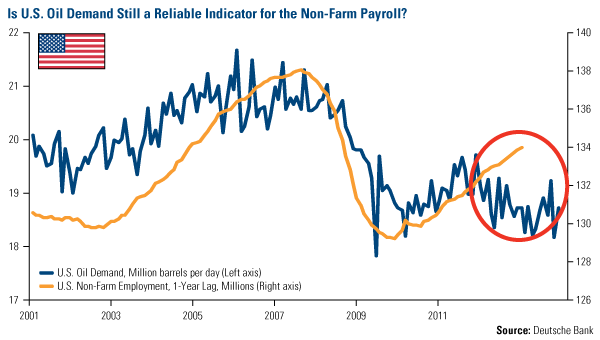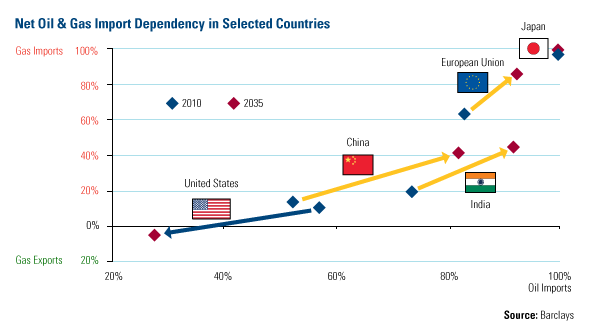Energy and Natural Resources Market Radar (March 11, 2013)

Strengths
- The price of natural gas gained nearly 5 percent this week to $3.62 per Mmbtu, its third weekly gain, as late winter storms increased demand for the fuel. Additionally, MDA Weather Service predicted another round of below-normal temperatures for the Eastern region of the country next week.
- The Energy Information Administration (EIA) said U.S. crude oil production reached 7 million barrels per day in February due to increase in the crude production from the Bakken oil field in North Dakota.
- TheFinancial Times notes that China has overtaken the U.S. as the world's largest net importer of oil. U.S. net oil imports dropped to 5.98 million barrels a day in December, the lowest since February 1992, according to figures from the EIA. In the same month, China's net oil imports surged to 6.12 million barrels a day. The U.S. has been the world's largest net importer of oil since the mid-1970s. U.S. domestic oil production is booming on the back of the oil shale revolution, reducing the need for crude oil imports.
- China’s daily crude steel output rose 1.4 percent to 2.03 million tons in late February, the China Iron & Steel Association said.

Weaknesses
- According to copper miner Teck Resources Inc., investors continue to underestimate the true copper cost curve. TCK management believes costs are tracking 20 percent above current long term estimates of $2.50 to $2.75 per pound, and once you include sustaining capital of $0.25 per pound, you actually end up with a price closer to $3.50 per pound. As such, TCK expects additional projects to be shelved or curtailed. However copper has the best 10 year supply-demand fundamentals in their commodity universe.
- Rusal PLC , the world's largest aluminum producer, will cut annual output by around 7 percent this year, the company said Monday, paring excess global supply at a time of lackluster demand, depressed prices and rising output in China and the Persian Gulf.
Opportunities
- Texas is poised to more than double daily oil production by 2020, surpassing a 1972 record with surging output from the Eagle Ford shale and Permian Basin, the state’s petroleum regulator said.
- Oil production may rise to as much as 1.75 million barrels a day in 2013 from about 1.5 million barrels a day last year, Barry Smitherman, chairman of the Railroad Commission of Texas, said in an interview at the IHS CERAWeek conference in Houston today. The commission oversees oil and gas drilling and production in the state.
- By 2020, Texas’ crude output may exceed the 3.45 million barrels a day seen in 1972 if prices stay high enough to make drilling economic, he said.
- “The Eagle Ford really continues to ramp up, especially the liquids and crude portion,” Smitherman said. The Eagle Ford, which includes an area south of San Antonio, may reach 800,000 to 900,000 barrels a day by 2016, while the Permian in West Texas may reach one million barrels a day, he said
- The Los Angeles Times writes that the Mexican government has passed a reform that allows foreign investment in Pemex. The article goes on to say that this could eventually allow U.S. oil firms to drill in the region.
- According to the U.S. Department of Agriculture, China is poised to become the world’s largest wheat producer in the next 10 years.
Threats
- Following the death of Venezuelan President Hugo Chavez this week, Bloomberg reported that China is taking a look at the risks Chavez’s death poses to China’s investments in the country that total around $50 billion after 14 years of close ties with the leader that have led to contracts to build railroads, housing and power stations. One analyst at Mirae Asset Securities said “the death of Chavez could lead to oil supply uncertainties from Venezuela and could jeopardize Venezuela’s oil exports to China in the short term.”












